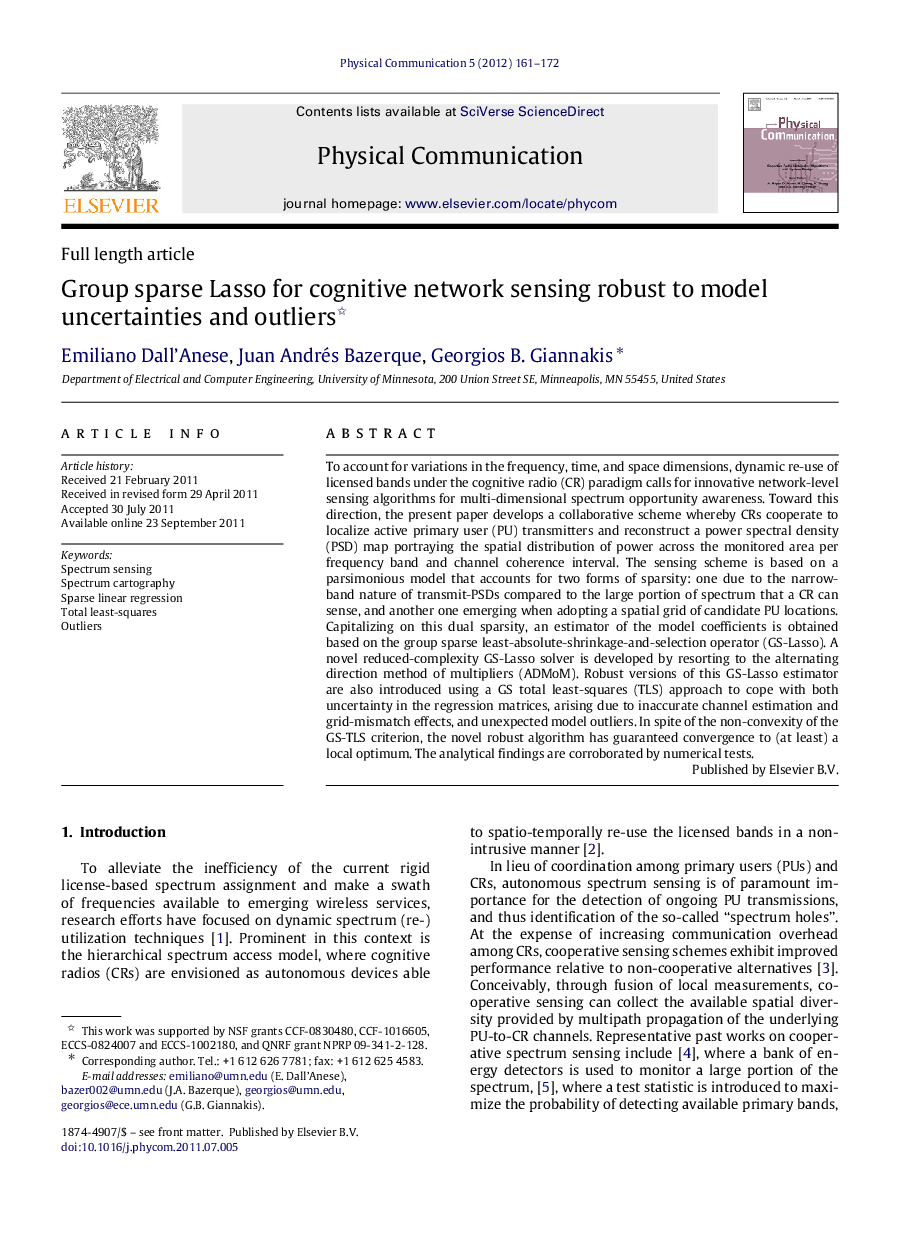| Article ID | Journal | Published Year | Pages | File Type |
|---|---|---|---|---|
| 466362 | Physical Communication | 2012 | 12 Pages |
To account for variations in the frequency, time, and space dimensions, dynamic re-use of licensed bands under the cognitive radio (CR) paradigm calls for innovative network-level sensing algorithms for multi-dimensional spectrum opportunity awareness. Toward this direction, the present paper develops a collaborative scheme whereby CRs cooperate to localize active primary user (PU) transmitters and reconstruct a power spectral density (PSD) map portraying the spatial distribution of power across the monitored area per frequency band and channel coherence interval. The sensing scheme is based on a parsimonious model that accounts for two forms of sparsity: one due to the narrow-band nature of transmit-PSDs compared to the large portion of spectrum that a CR can sense, and another one emerging when adopting a spatial grid of candidate PU locations. Capitalizing on this dual sparsity, an estimator of the model coefficients is obtained based on the group sparse least-absolute-shrinkage-and-selection operator (GS-Lasso). A novel reduced-complexity GS-Lasso solver is developed by resorting to the alternating direction method of multipliers (ADMoM). Robust versions of this GS-Lasso estimator are also introduced using a GS total least-squares (TLS) approach to cope with both uncertainty in the regression matrices, arising due to inaccurate channel estimation and grid-mismatch effects, and unexpected model outliers. In spite of the non-convexity of the GS-TLS criterion, the novel robust algorithm has guaranteed convergence to (at least) a local optimum. The analytical findings are corroborated by numerical tests.
